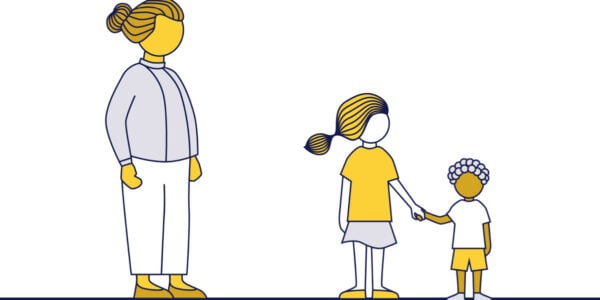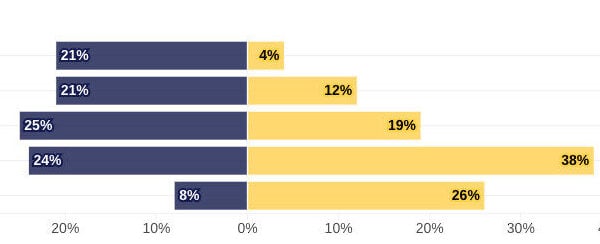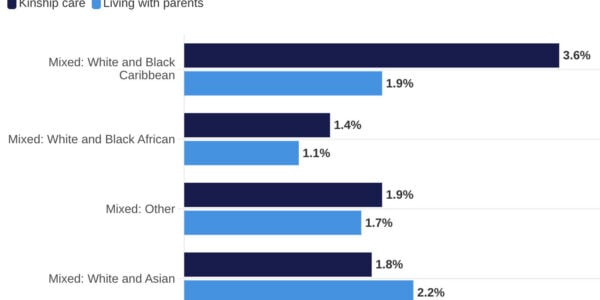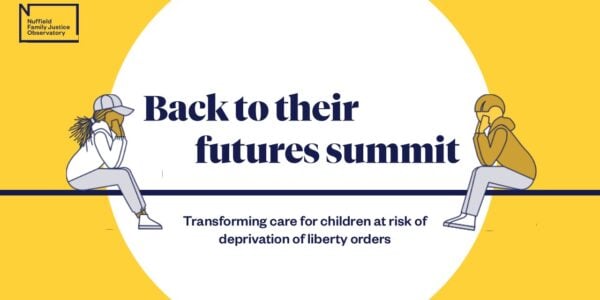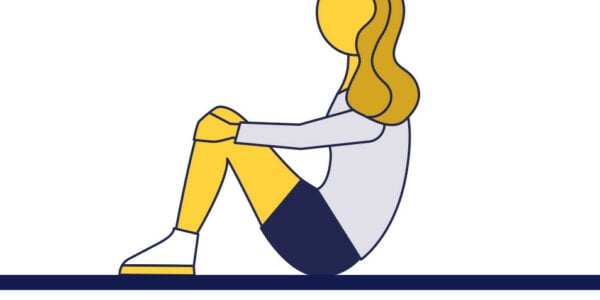Introduction
This summary highlights the key themes and issues identified in 31 judgments, published between 2014 and 2021, relating to applications to the family court to authorise the deprivation of liberty of a child in a secure children’s home under section 25 (s.25) of the Children Act 1989 (and section 119 (s.119) of the Social Services and Well-being Act (Wales) 2014), or under the inherent jurisdiction of the high court. These judgments provide clarification about the law in relation to use of the inherent jurisdiction to deprive children of their liberty as well as highlighting some of the concerns raised by judges in connection with these applications.
We identified 31 judgments, published between 2014 and 2021. Cases were identified by a search of the British and Irish Legal Information Institute (BAILII) database and by following up on other cases cited in these judgments.
The published judgments we identified will relate to just a fraction of the actual number of cases heard, particularly of secure accommodation cases. This is because only a very small proportion of judgments are published in BAILLI from circuit judges and district judges, who are more likely to be the judges hearing applications under s.25 of the Children Act 1989. Deprivation of liberty applications under the inherent jurisdiction are heard by high court judges (or circuit judges sitting as high court judges), who are more likely to publish judgments.
In 2020/21, 392 applications were made in England and Wales for secure accommodation orders and 579 applications were made for deprivation of liberty orders under the inherent jurisdiction in England (Ministry of Justice 2021; and data provided by Cafcass, cited in Roe 2022).
What is deprivation of liberty?
The term ‘deprivation of liberty’ comes from Article 5 of the European Convention on Human Rights (ECHR), which provides that everyone, of whatever age, has the right to liberty. The ECHR was incorporated into national law by the Human Rights Act (HRA) 1998. Article 5 of the ECHR protects everyone’s right to liberty by setting out the limited circumstances in which a deprivation of liberty is allowed, and requires strict safeguards to be in place for those who are deprived of their liberty. Such safeguards include the requirement that any deprivation of liberty must be by ‘a procedure prescribed by law’ and that those who are deprived of their liberty have the right to have the lawfulness of their detention reviewed by a court.
The supreme court confirmed that whatever their age, a person’s care
arrangements will give rise to a deprivation of liberty if the following three
conditions are met:
- the objective component of confinement in a particular restricted place for a not negligible length of time
- the subjective component of lack of valid consent
- the attribution of responsibility to the state (RE D (A Child) [2019] UKSC 42).
The family courts can authorise a child’s deprivation of liberty via s.25 of the Children Act 1989 (and s.119 of the Social Services and Well-being Act (Wales) 2014), which authorises the placement of looked-after children in a registered secure children’s home. Section 25 sets out the ‘welfare’ criteria that must be met before a child can be placed in secure accommodation:
- the child has a history of absconding and is likely to abscond from any other description of accommodation
- if the child absconds, they are likely to suffer significant harm
- if the child is kept in any other description of accommodation, they are likely to injure themselves or others.
Alternatively, the inherent jurisdiction of the high court can be used to authorise the deprivation of liberty of a child in an alternative, unregulated secure placement, when none of the other statutory mechanisms apply (i.e. there are no places available in secure children’s homes or the criteria under s.25 are not met). In Re T (A Child) [2021] UKSC 35, the supreme court confirmed that the inherent jurisdiction can be used to authorise the deprivation of liberty of children in alternative restrictive placements alongside the statutory scheme set out in s.25 of the Children Act 1989
Key themes
Shortage of appropriate placements
- There is a severe shortage of available placements in registered secure children’s homes.
- It is also apparent that there is a cohort of children whose needs cannot be met by secure children’s homes, particularly children who display very severe self-harming or aggressive behaviours. Often, in these cases, the children are assessed as not meeting criteria for detention under the Mental Health Act 1983 – with their behaviours judged to be the result of ongoing trauma or attachment difficulties rather than a ‘diagnosable’ mental health condition. They require specialist, intensive therapeutic provision, often in single occupancy restrictive placements. There is a severe lack of availability of this type of placement.
- There is also evidence of a shortage of availability of secure mental health inpatient beds for children who are in need of this type of provision.
Concerns about the use of the inherent jurisdiction of the high court to deprive children of their liberty
- As a result of the above shortages, there has been an increase in the use of the inherent jurisdiction of the high court to authorise the deprivation of liberty of children in placements that are unregulated and frequently unregistered. These placements are often intended to be short-term, while a more suitable placement is found. However, the judgments (often several relating to the same child) indicate that they can last much longer, with some children remaining in ‘emergency placements’ for many months.
- Serious concerns were expressed in these judgments about children being placed in ‘suboptimal’ settings that are unable to meet the child’s needs, including lack of any therapeutic input, unspecialised staff and inadequate access to education or training. Judges expressed concern about the court’s ability to properly consider the child’s welfare in these cases. They have also commented that the lack of therapeutic and educational provision in these settings may amount to a breach of children’s Article 5 rights (Human Rights Act 1998). In a number of recent cases, the court has refused to authorise the use of such placements on the grounds that the placements were so inappropriate, they cannot be said to be in the child’s best interests.
- Due to a difficulty finding suitable placements in England and Wales, some children are being placed in accommodation in Scotland, subject to restrictions on their liberty. Where these placements are not recognised providers of secure accommodation, applications are made to the high court for an order authorising the deprivation of liberty. The local authority placing the child then needs to seek a similar order in the Scottish courts but judgments in these cases indicate a lack of clarity as to whether such orders will be authorised by the court of sessions. In
January 2022 the Scottish government published proposals that would enable the Scottish courts to automatically recognise deprivation of liberty orders issued by the high court in England and Wales without the need for a separate court application. Draft regulations are due before the Scottish parliament in Spring 2022. - Judgments have confirmed that the inherent jurisdiction of the high court can be invoked despite the existence of the provisions relating to secure accommodation in s.25 of the Children Act 1989. However, some judgments have indicated a concern that, in some cases, the inherent jurisdiction is being used to bypass the framework set out in s.25 of the Children Act 1989. Linked to this, judges have expressed concern that in some cases there have been delays with the child being appointed a guardian or joined as a party, or periods of time where no legal authorisation has been in place for restrictions placed on the child, or that review processes have been inconsistent.
The placement of children in unregistered or unregulated settings
- A number of judgments consider the impact of the Care Planning,
Placement and Case Review (England) (Amendment) Regulations
2021, which prohibit the placement of a child under the age of 16 in an unregulated placement. According to the decision in MBC v AM & Ors (DOL Orders for Children Under 16) [2021] EWHC 2472 (Fam), it remains open to the high court to authorise, under its inherent jurisdiction, the deprivation of liberty of a child in such a placement. - Judgments have also considered the implications of the President of the Family Division’s Practice Guidance: Placements in Unregistered Children’s Homes in England or Unregistered Care Home Services in Wales (2019), concluding that the court should not ‘ordinarily countenance’ the exercise of its inherent jurisdiction where an unregistered placement either would not or could not comply with the Practice Guidance requirement to apply expeditiously for registration.
- However, judgments indicate that children are placed in unregistered placements even where there are ongoing issues with their registration – for instance because the provider refused to apply to Ofsted for registration, or because Ofsted refuse to register the placement.
Use of the high court for injunctions against adults to protect children
- Among the judgments were cases where the local authority had sought to apply to use the inherent jurisdiction of the high court for injunctions against men over the age of 18 who were identified as a risk to young women. This was considered a different approach to protecting children at risk of exploitation, by placing restrictions on the adults who exploited them, rather than (or as well as) restricting the liberty of children.
- These cases all took place between 2014 and 2016 and related to cases where children were at risk of child sexual exploitation from identified men where criminal proceedings were not issued. It is not clear if this approach is still being used (and judgments not published) or not.
What can we learn about children subject to these applications from the judgments?
- Many children subject to restrictions on their liberty were known to
children’s services from an early age – either adopted, subject to
multiple child protection interventions and/or entered care in early
childhood. They often had behavioural issues that were identified
early on (e.g. attention deficit hyperactivity disorder (ADHD), autism, emotion dysregulation) and that became harder to manage as the child reached adolescence, resulting in the escalation of issues that led to the child being placed in a secure setting. In many cases, there was lack of evidence of early intervention and support for families. - In other cases, the child may have come to the attention of children’s services relatively late and there was a relatively quick escalation in the child’s behaviour and risks that led to them being placed in a secure setting.
- In the period before the application to the court, the majority of children were subject to multiple placement moves, frequent breakdown of arrangements made for their care, and disruption to their lives. This included previous periods of secure accommodation or placements in unregistered settings.
- Children subject to deprivation of liberty orders under the inherent
jurisdiction were subject to a range of restrictions on their liberty,
including constant supervision with high staff to child ratios, being kept in locked environments, having limited or no access to a mobile phone/ internet, and being subject to restraint interventions. - It was evident that a lot of children spent significant periods of time in suboptimal placements without the therapeutic support they needed to make significant long-term improvements. These placements were often many miles from the child’s home. One child had spent almost three years living in single occupancy placements, subject to restrictions on his liberty, with very limited opportunities to engage with other children.
- The judgments provide an indication of the child’s situation when the case is before the court. Some cases return to court and it is possible to get a sense of how the case progresses. However, in most cases, it is unknown what happens after an order is made. In general, there is a lack of research and evidence about children’s outcomes following a secure placement (see Roe 2022).
References
Parker, C. (2022). Deprivation of liberty: Legal reflections and mechanisms. Briefing. Nuffield Family Justice Observatory. https://www.nuffieldfjo.org.uk/resource/deprivation-of-liberty-legal-reflections-and-mechanisms-briefing
President of the Family Division (2019). Practice Guidance: Placements in unregistered children’s homes in England or unregistered care home services in Wales. Courts and Tribunal Judiciary. https://www.judiciary.uk/publications/practice-guidance-placements-in-unregistered-childrens-homes-inengland-or-unregistered-care-home-services-in-wales-2/
Roe, A. (2022). What do we know about children deprived of their liberty in England and Wales? An evidence review. Nuffield Family Justice Observatory. https://www.nuffieldfjo.org.uk/resource/children-and-young-people-deprivedof-their-liberty-england-and-wales
Roe, A., Cusworth, L. and Alrouh, B. (2022). Children subject to secure
accommodation orders: A data review. Nuffield Family Justice Observatory. https://www.nuffieldfjo.org.uk/resource/children-subject-to-secureaccommodation-orders-a-data-review
This report was written in partnership with
4PB
This report summary was written in partnership with 4PB.
4PB is one of the largest specialist family law chambers in England and Wales. Its barristers are regularly involved in landmark developments in family law and family justice.
